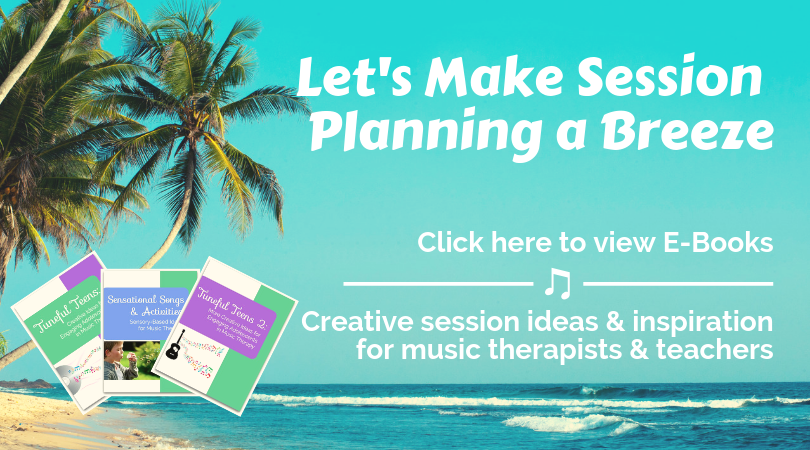When I first started Wholesome Harmonies, I envisioned my business solely providing music therapy services. (In fact, my business name used to be Wholesome Harmonies Music Therapy).
As the years have gone by, though, I’ve received more and more requests from parents looking for someone to teach music lessons to their child with special needs.
But they aren’t looking for just any teacher.
They’re looking for someone who knows how to handle a child with challenging behaviors. They’re looking for someone who can make adaptations for a teenager who has difficulty sitting and attending for long periods of time.
I am always happy to tell parents that we do have someone who can handle all of the above! That’s because all of our lessons are taught by board certified music therapists.
As music therapists, we have the training and expertise to work with children who have special learning needs. We have the skills to handle attention difficulties and behaviors. We also have the skills to provide creative adaptations to ensure our students feel successful when learning an instrument.
I find that parents are most interested to hear about what creative adaptations we use.
Here are a few of my favorites:
Color coded notation
If traditional music notation is too challenging, we can utilize a color-coded notation system to help students learn to play the piano. Colored tabs are placed on the piano keys and colored notes are used on sheet music. Students then match the color of the note on the sheet music with the color of the note on the keyboard and learn to play a song!
Click here to watch a video and see pictures of how I put a color-coded notation system into practice.
Musical games
A theory book can get dry pretty quickly. I use games like Memory and Go Fish to teach the musical symbols in a fun way. These games help students practice identification of notes, rests, treble clefs, bass clefs, and other musical symbols.
You can read step-by-step instructions for those games here.
Songwriting
Some of my students, particularly the older ones, are not big fans of their lesson books. I can’t really blame them, because sometimes the songs and pictures are geared toward the younger generation. One thing I like to do is encourage songwriting, especially in my guitar lessons. I’ve found this to be a great motivational technique. Students are much more interested in playing THEIR song than the one in the lesson book. It can be as simple as coming up with lyrics, a melody and three chords on guitar. I have one student who has written enough songs to create an entire album of her original songs!
Stay tuned next week when I share MORE of the creative adaptations I use to meet my students where they’re at and help them master an instrument.





Leave A Comment